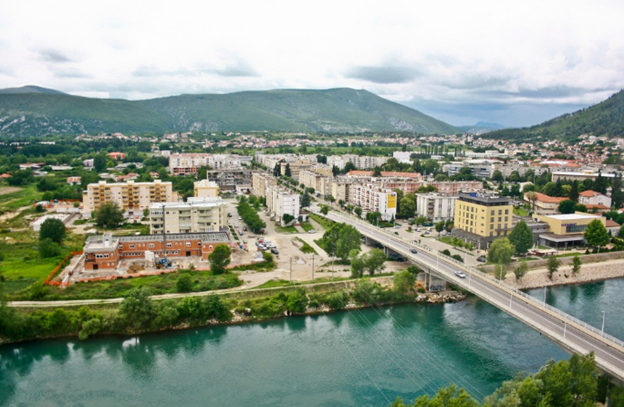
MODERNIZING THE ENERGY INFRASTRUCTURE IN ČAPLJINA, BOSNIA AND HERZEGOVINA
Bosnia & Herzegovina, Rural area, Solar Energy, Wind Energy, Smart Grid & V2G
Overview
To support long-term energy planning in rural areas, an analysis was conducted for the Municipality of Čapljina, considering local renewable energy (RES) potential, demographic trends, and environmental protection. Three energy scenarios were evaluated: LowRES (business-as-usual approach), RES (moderate renewable integration), and HighRES (full renewable transition). The results indicate that Čapljina has significant potential for solar and wind energy generation, with vehicle battery storage and smart grid solutions playing a key role in stabilizing the energy system. The HighRES scenario demonstrates that a fully renewable energy system is feasible with strong municipal support and strategic investments. Detailed analysis of the available private, public and ground surfaces for Photovoltaic (PV) systems supports the potential for high implementation of solar energy.To achieve this, the municipality could facilitate the formation of an Energy Community, prioritizing solar PV installations on public and private buildings. Public buildings should lead by adopting heat pumps for heating and cooling, coupled with the installation of Electric vehicle (EV) charging stations. Encouraging residential PV adoption and implementing public awareness campaigns on smart charging and vehicle-to-grid solutions will further support a sustainable energy transition.
a)
b)
Figure 1 Monthly representation of technologies contributing to the power supply in a) RES and b) HighRES scenario, with import representing the necessary additional energy that would be imported from the national grid
Socio-Economic Feasibility Analysis
Investment in power generation and storage technologies was assessed. Vehicle-to-grid (V2G) technologies enhance grid stability, reducing reliance on fossil fuel backups. The HighRES scenario, while significantly more expensive than the RES scenario (7 times, due to the wind power installations), enables a faster decarbonization timeline. The cost of HighRES implementation is therefore offset by long-term sustainability and energy independence. Local job creation is significant in HighRES scenario, with employment opportunities mainly in RES installations, such as wind power, maintenance of PV and wind, and smart grid management related to V2G solutions. It was determined that public-private partnerships can accelerate the adoption of RES technologies.
Macro objective:
- Demonstrate the feasible integrated energy system for a rural community, based 100% on locally available renewable energy sources
Specific objectives:
- Use locally available renewable energy
- Decarbonize sectors of energy demand, primarily transport to exploit the synergetic effects provided by vehicles batteries
- Provide socio-economically sound options for the development of an island community
Impacts that could be achieved by 2030:
- CO2 emissions reduced by 36 kt per year, due to increased RES adoption
- New RES installations: 8.2 MW Solar PV, 20.75 MW wind power
- Local employment benefits: 10+ sustainable jobs in RES installation and maintenance in HighRES scenario, or up to 5 in RES scenario
Technical transferring partner in the PRISMI PLUS project




